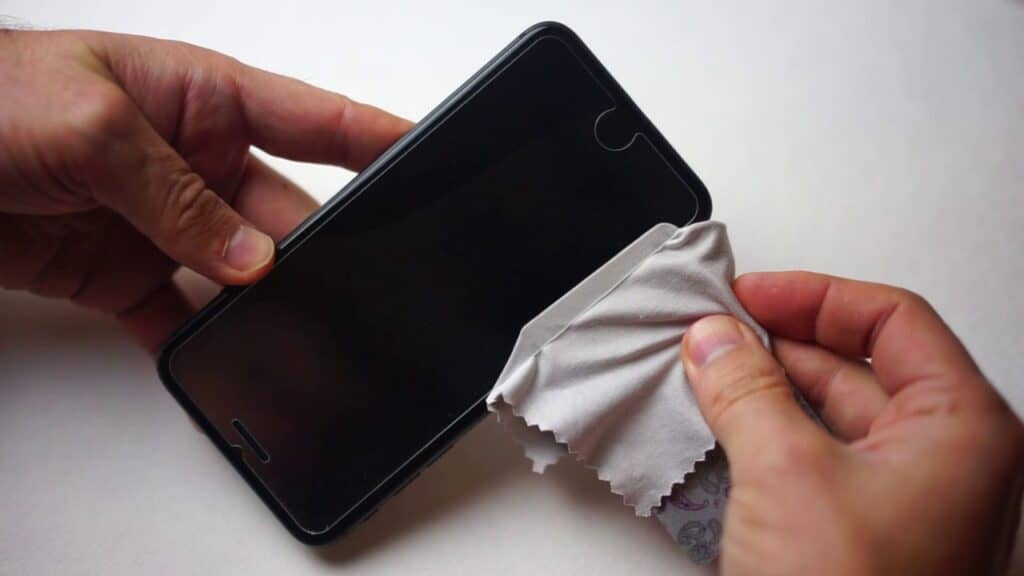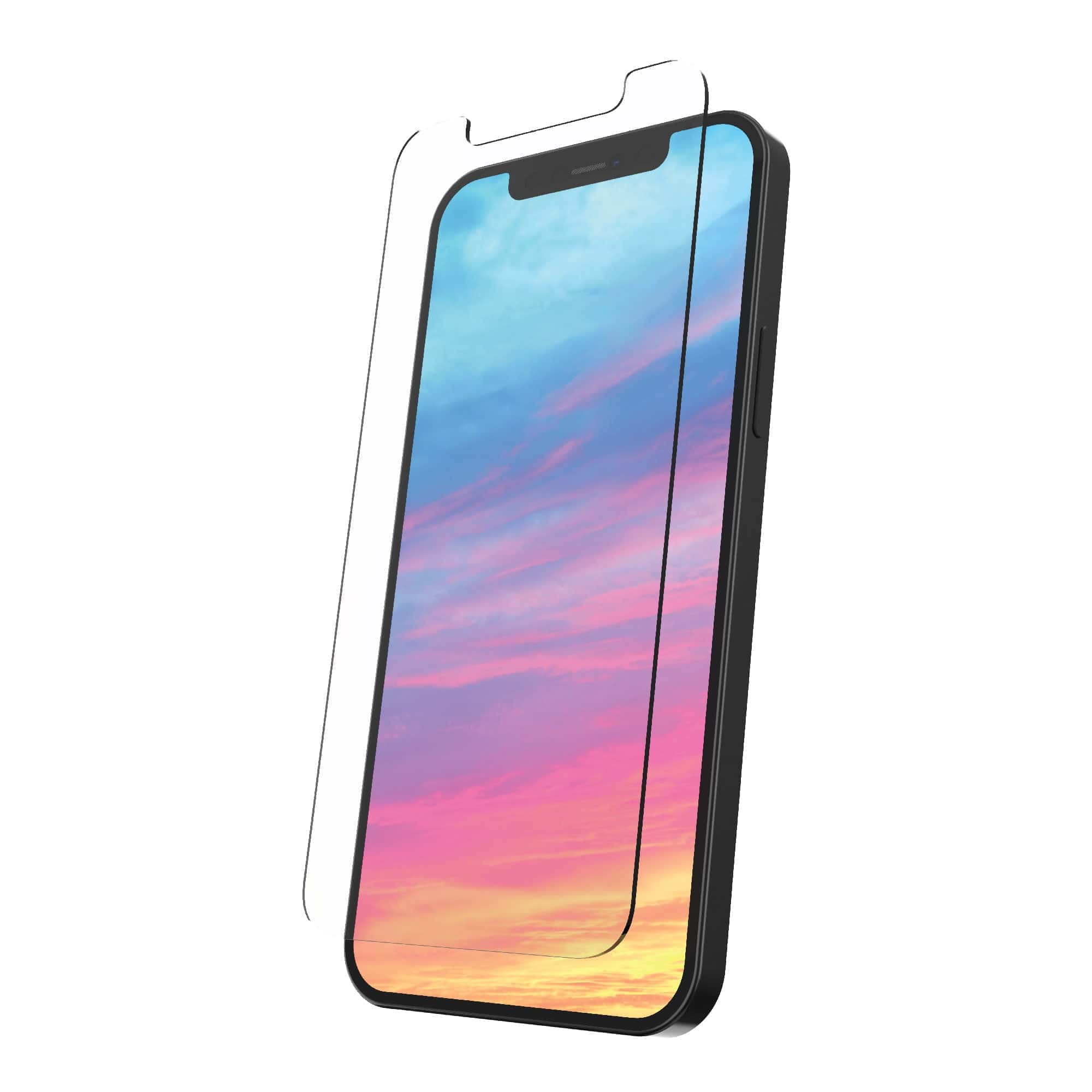Screen protectors are essential for keeping your phone’s screen safe from scratches and cracks, but they need to be replaced eventually. Knowing how to remove the old protector correctly is important. With a little patience and the right technique, you can have that old protector off in no time. Removing a screen protector from a device like a smartphone or tablet is a practical task you might encounter if the protector is damaged or if you’re preparing to install a new one.
While the protection offered by a screen protector is important for keeping your device’s screen free from scratches and cracks, knowing how to take one off correctly is equally significant. It ensures the device remains in good condition without any damage to the screen itself.
Tips for Removing a Screen Protector
Taking off a screen protector can be tricky. You don’t want to damage your phone’s screen in the process. Here’s a simple guide to help you remove that old screen protector safely.
Gather Your Supplies
You don’t need any special tools. A few common household items will do the trick:
- A thin, flexible card: An old credit card, gift card, or even a library card works well.
- A microfiber cloth: This will help clean the screen after you remove the protector.
- Optional: A hairdryer (on a low setting): This can help loosen the adhesive if the protector is really stuck.
Removal Steps
- Wash your hands: This removes any oils that could get on your phone’s screen.
- Find a corner: Gently lift a corner of the screen protector. You can use your fingernail or the edge of your thin card. If one corner doesn’t lift easily, try another.
- Slide the card under: Once you have a corner lifted, carefully slide your card underneath the screen protector.
- Slowly peel it back: Continue to peel the protector back, using the card for support. Go slowly and try to keep the protector from bending too much.
- Clean the screen: After the protector is removed, use your microfiber cloth to clean any remaining adhesive.
Troubleshooting
| Problem | Solution |
|---|---|
| The corner won’t lift. | Try using a hairdryer on a low setting to warm the adhesive. Be careful not to overheat your phone. |
| The protector breaks. | Use your card to carefully lift the remaining pieces. |
| There’s a lot of adhesive left. | Use a little rubbing alcohol on your microfiber cloth to remove the residue. |
How to Remove a Screen Protector
| Step | Description | Important Tips |
|---|---|---|
| 1. Assess the Screen Protector | * Type of protector: Is it tempered glass or a plastic film? Tempered glass may be more prone to shattering. | * If the protector is severely cracked, wear gloves and handle with caution to avoid cuts. |
| 2. Soften Adhesive (Optional) | * Hairdryer: Use a hairdryer on LOW heat for about 15 seconds to slightly soften the adhesive. Avoid overheating your phone. | * This step is often optional for plastic film protectors. |
| 3. Lift a Corner | * Fingernail: Try gently prying up a corner of the protector. * Toothpick or Credit Card: If your fingernail isn’t enough, carefully slide a toothpick or plastic card under the corner. | * Avoid using sharp metal objects that could scratch your screen. * Work slowly and gently. |
| 4. Peel Off Protector | * Gradually lift: Once a corner is loose, slowly peel the protector back, keeping it close to the screen’s surface to prevent breaking (especially with tempered glass). * Use a card: If needed, slide a credit card under the protector to help lift it. | * If it’s shattering a lot, use tape to secure the cracks and reduce the chance of cuts. |
| 5. Clean Residue | * Alcohol wipe: Lightly moisten with an alcohol wipe to remove any sticky residue. * Microfiber cloth: Wipe the screen dry with a clean microfiber cloth. | * Avoid harsh cleaning agents on your phone screen. |
Additional Notes
- Stubborn residue: For very sticky residue, try a bit of cooking oil on a cotton swab, followed by cleaning with alcohol.
- Don’t force it: If the protector is firmly stuck, don’t try to yank it off forcefully as this could damage your screen.

Different types of screen protectors might require slightly different removal techniques. However, the fundamental steps involve loosening the protector gently without force or excessive heat. The removal process usually starts at a corner of the protector, using a tool like a fingernail or a plastic card.
Key Takeaways
- Screen protectors are essential for device protection but require careful removal.
- Use appropriate tools to gently lift the protector starting at a corner.
- Heat can assist in loosening the adhesive but should be applied carefully.
Preparing for Removal
Before attempting to remove a screen protector, it’s essential to gather the right set of tools and identify the type of screen protector adhered to the device. Doing so ensures a smooth and safe removal process.
Gathering the Necessary Tools
Tools you’ll need:
- Microfiber Cloth: To clean the device screen after removal.
- Credit Card or Plastic Card: To assist in peeling the protector away from the screen.
- Duct Tape or Clear Tape: Can be used for additional grip on the protector.
- Toothpick or Similar Object: Useful for lifting a corner of the protector.
- Hairdryer (optional): May be used to apply low heat to loosen the adhesive.
- Rubber Gloves (optional): To keep a good grip on the tools and protect your hands.
Method:
- Use a clean microfiber cloth to clear any debris from the device’s surface.
- Have a credit card or similar plastic card on hand to gently lift the edge of the screen protector.
- If applicable, prepare a small piece of duct tape or clear tape to assist with gripping if necessary.
- Obtain a toothpick or another fine point to initiate the removal process by targeting a corner of the protector.
- Decide if a hairdryer is needed based on the strength of the adhesive.
- Consider wearing rubber gloves to keep a steady grip and protect your fingertips.
Assessing Screen Protector Type
Types of Screen Protectors:
- Tempered Glass Protector: Thick and durable, often requiring heat application to loosen.
- Plastic Screen Protector: Flexible and thin, usually easier to remove without additional tools.
Factors to Consider:
- Assess if the model of the device has any specific requirements or vulnerabilities when removing a screen protector.
- Determine if the screen protector is cracked or damaged, as this may alter the removal approach.
- Check the edges and corners of the screen protector; if they’re already lifting, this could indicate a weakened adhesive.
By taking these preparatory steps, you can ensure the screen protector is removed safely and efficiently, preserving the condition of your device screen.
Removing the Screen Protector
When it’s time to take off a screen protector, doing it the right way is crucial. This prevents damage to your phone’s actual screen and ensures the area is ready for a new protector if you choose to apply one.
Loosening the Protector Edges
Begin by finding an edge of the screen protector that is easy to access. It’s often best to start at a corner. You might want to use a piece of duct tape for better grip. Press the sticky side of the tape onto a corner of the protector and lift gently. If tape doesn’t work, slide the edge of a plastic card—like a credit card—under the protector. You can also try using your fingernail. This process should not be rushed to avoid breaking the protector or damaging the device.
Lifting and Peeling the Protector
After you have lifted an edge, slowly peel the protector away from the screen at a steady pace. Hold down the phone with one hand while pulling with the other to maintain control. If the screen protector is glass and it’s cracked or broken, be extra careful to avoid injury or further damage to the phone. A slow, controlled motion will minimize the risk of leaving residue or adhesive on the screen.
Cleaning the Device Screen
Once the screen protector is off, there’s often a bit of cleaning to do. Use a soft cloth and a cleaning solution that’s safe for electronics. You can also use alcohol wipes to remove leftover adhesive. Rub gently in a circular motion. This helps you get rid of any residue without scratching the device.
Remember, the goal is to remove the screen protector and clean the screen without causing any harm to your phone. Take your time, handle the materials with care, and your device will be ready for its next screen protector.
Frequently Asked Questions
This section offers step-by-step solutions for removing screen protectors from various devices, providing clear instructions to handle different scenarios you might encounter.
What are the steps to safely remove a glass screen protector from my smartphone?
To remove a glass screen protector, first turn off your device. Slowly lift a corner of the protector using a fingernail or plastic card. If necessary, apply low heat with a hairdryer from at least 6 inches away to loosen the adhesive. Then peel the protector away from the screen carefully.
Can I remove a cracked screen protector without causing further damage?
Yes, you can remove a cracked screen protector. Start by turning off your device. Place a piece of duct tape on the corner of the protector to lift it. Ensure you pull the protector gently to prevent any shards from damaging your device or injuring your fingers.
What is the best method to peel off a screen protector without leaving any residue?
Peel off a screen protector smoothly by using a toothpick or your fingernail to raise a corner. Roll a piece of duct tape around two fingers with the sticky side out and press it against the corner to lift the protector. If there’s residue, gently wipe the screen with an alcohol wipe.
Is it safe to remove and reapply a screen protector, and if so, how?
Removing and reapplying a screen protector is possible but not recommended as it can affect the adhesive quality. If you must reapply it, carefully remove the protector without bending it, clean both the protector and the screen thoroughly, and realign it meticulously on the screen.
How do you effectively remove a screen protector that won’t come off easily?
For stubborn screen protectors, turn off your device and use a hairdryer on the lowest heat setting. Keep the hairdryer at a safe distance, warm the edges of the protector for a few seconds, then try lifting it again with a plastic card or your fingernail.
Will the removal of a tempered glass screen protector harm my device’s screen?
No, if done correctly. Safely removing a tempered glass screen protector involves careful, gradual peeling that minimizes risk to the device’s screen. Avoid using sharp objects that could scratch or damage the screen underneath the protector.







